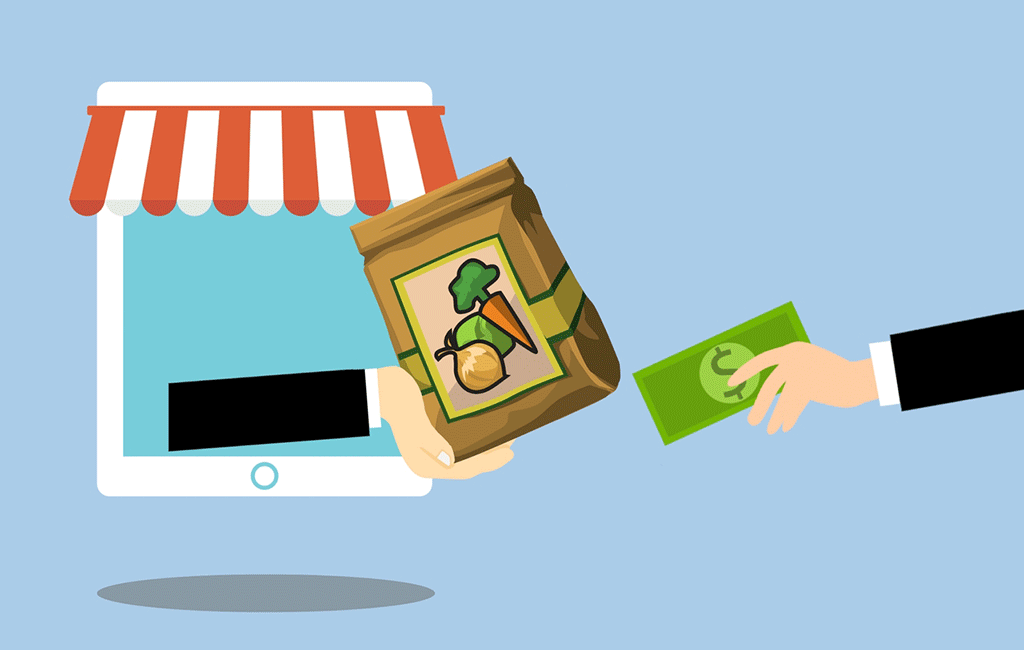
The ability to shop online for groceries with food stamps is more than just a convenience or a luxury. Prior to this pandemic it was an issue of basic fairness – of not discriminating against certain kinds of shoppers.
But now it’s possibly a matter of life and death.
Hunger and food insecurity are increasing during the coronavirus pandemic as business closures take a heavy toll on people’s incomes. The order to stay at home still allows people to venture out for essentials like food. But rules about who can pay for groceries online are hitting those who rely on food stamps even harder during this pandemic.
Federal law prohibits the use of food stamps for online payment in most of the U.S. There are five states that have been taking part in a federal pilot program, begun in 2019, to test the ability of the USDA Supplemental Nutrition Assistance Program (SNAP) to accommodate online grocery ordering and payments with food stamps. Until the federal government expands the test run to our commonwealth or lifts the ban nationwide, Pennsylvanians can’t pay for groceries online with food stamps.
Food stamp shoppers in under-resourced neighborhoods without grocery stores also typically don’t own a car. They are also likely to be in poorer health. Chronic health conditions make them or someone in their household vulnerable to a severe or fatal case of the virus. Having to use public transit, rideshare, or a jitney to go grocery shopping becomes a serious risk. But what if the person who could otherwise take them shopping is sick or shouldn’t be near them? What else can they do?
Without online SNAP payment options, there are only three options for paying with food stamps upon delivery:
1) Paper vouchers. Stores consider these too big a risk because they have no guarantee of payment if the SNAP recipient runs out of benefits by the time the government processes and redeems the paper voucher.
2) Mobile Electronic Benefits Transfer (EBT) technology i.e. delivery drivers swiping people’s food stamp benefits card. But smaller stores don’t have delivery drivers. Even if larger stores’ drivers had that equipment, they likely couldn’t maintain social distancing during the transaction, and available delivery dates seem to be few and far between these days.
3) The USDA suggests that larger retailers who have mobile EBT should be able to run transactions while customers are still in the car. But again, how does this help food stamp shoppers who need to quarantine or maintain strict social distancing but aren’t able to drive to a grocery store that offers this service?
At this point even curbside pick-up of grocery orders is becoming hard for retailers that offer it. They allow shoppers to reserve a time for pick-up, but the soonest available times are often weeks away and it requires payment in advance. This means food stamp shoppers can no longer order online and then pay with their EBT at pick-up to at least minimize their time in a grocery store.
Equitable healthy food access was a serious problem before this pandemic and economic downturn. That inequity is increasingly clear as growing numbers of people lose income and find themselves pushed into, or further into, poverty. They now also have to reckon with the conundrum of getting food when they are, or should be, homebound.
What Can Be Done?
Shorter-Term:
Sen. Bob Casey (PA-D) has introduced legislation that would encourage retailers to deliver groceries to SNAP recipients and allow them to swipe their electronic benefit transfer cards either at home delivery or at pick-up. It would provide $500 million for state agencies to reimburse retailers for delivery fees, which will help prevent those fees being passed on to food stamp shoppers. We are still evaluating this bill but will update this post when we have determined a course of action.
Longer-Term:
The PA Department of Human Services could request that the USDA allow our state into the SNAP online shopping pilot. To do this, the state can take the time to determine which retailers – including local chains, farms, and vendors – can participate. This would likely take months. Or they can move more quickly by allowing only already SNAP-certified nationwide retailers like Amazon and Walmart to participate.
Online grocery shopping and delivery platforms like Instacart may be helpful in expanding access to smaller retailers. Unfortunately, even then, many local grocery stores don’t have the capacity to manage inventory online. Developing a platform that can be certified by the USDA’s rigorous security standards for EBT is expensive and time-consuming. Large retailers like Amazon and Walmart that have already done this have a clear advantage.
We’ve asked Sen. Casey and local members of Congress to push to end the federal trial period and expand online food stamp purchasing nationwide. Key to this will be ensuring that the USDA creates a streamlined process for all kinds of retailers to use. We will also need to make sure that increased capacity at grocery retailers and delivery services doesn’t come at the expense of their employees’ well-being during this pandemic.
Lifting the ban on EBT online purchasing won’t address the affordability of a grocery delivery fee for food stamp shoppers. The federal pilot program left the charging of those fees entirely up to the retailers’ discretion. Generally, those stores are waiving delivery fees for SNAP recipients. We would advocate for those fees to be waived.
Affordable internet access must also be protected and expanded so low-income households can get online to shop. Just Harvest has joined hundreds of other organizations in signing onto a letter to the FCC to expand the Lifeline telephone and internet access program that the Obama administration created.
What You Can Do
![]() Take action to support legislation that would enable grocery delivery for SNAP recipients.
Take action to support legislation that would enable grocery delivery for SNAP recipients.
![]() Meanwhile, folks who can’t go shopping will need to find someone to do their shopping and make their purchases for them with their EBT card, which is allowed by federal law. But many people will likely struggle to find someone who can safely and reliably do that for them.
Meanwhile, folks who can’t go shopping will need to find someone to do their shopping and make their purchases for them with their EBT card, which is allowed by federal law. But many people will likely struggle to find someone who can safely and reliably do that for them.
Connect with your neighborhood or borough civic organizations. See if they are setting up a shopping service for homebound food stamp shoppers. Please let us know of any that are doing this so we can help get the word out! You can also offer your shopping assistance through an all-volunteer Pittsburgh Mutual Aid group.




I used my EBT food stamps to order groceries online from Walmart, Decatur, GA, but had to wait 6 days for a appointment time for pickup.
Payment and pickup was done by my son who had to pick up my EBT card and debit card (as Walmart had said) then he had to drive to store for pickup. I could not prepay and pick up only with food stamps.
I’m a senior and do not own a vehicle. This article stated that I “would have to find someone to pi k up!). Not many seniors have those options of ” finding someone” to pick up and deliver their groceries.!
That’s not right. Something needs to be done. Very inconvenient and put my son at risk!!
Thank you for sharing your experience. We’re simply stating what the available options are right now, but we completely agree — none of them are sufficient. That’s why we’re working to improve things in Pennsylvania. We recommend you get in touch with your U.S. Representative and Senators in Georgia to let them know how federal food stamp rules are threatening you and your family’s health during this crisis.